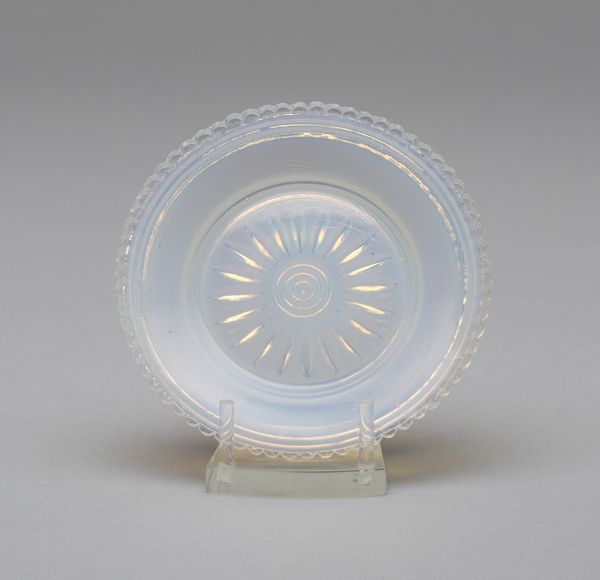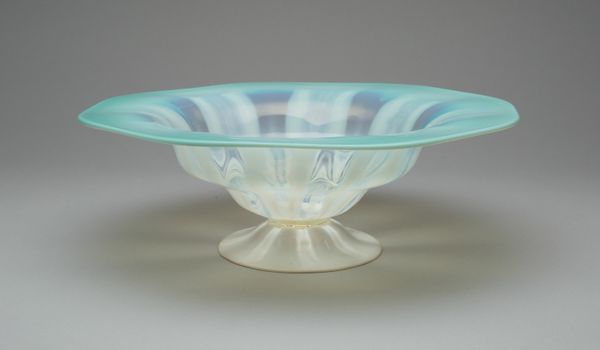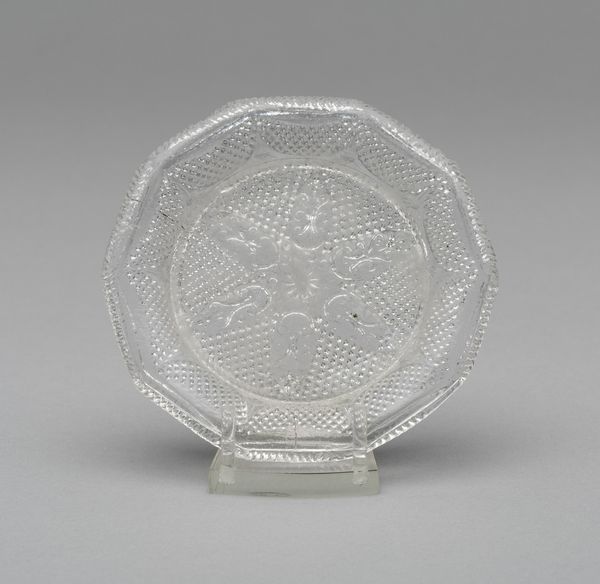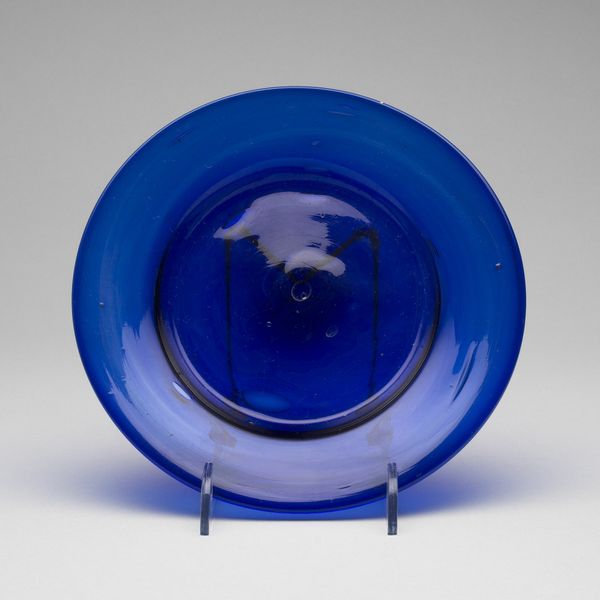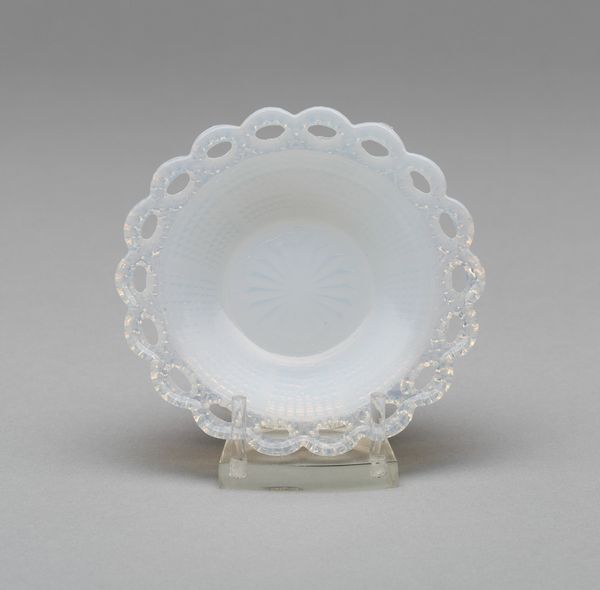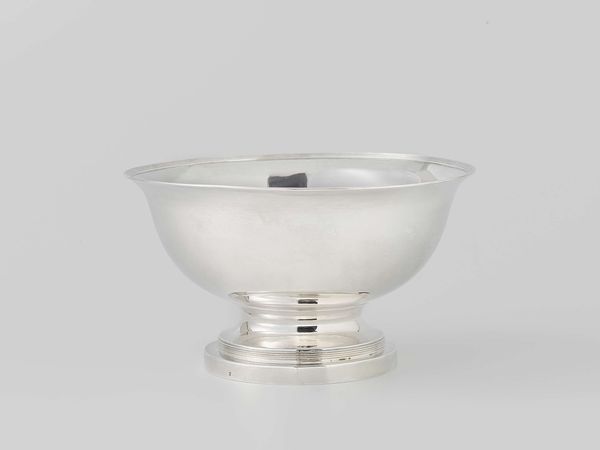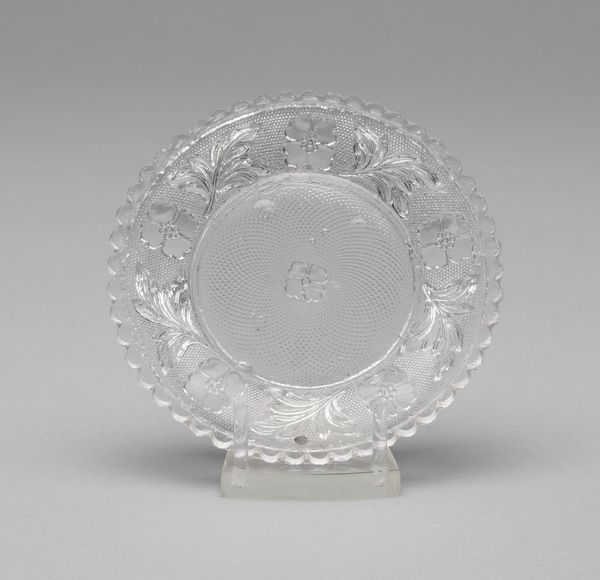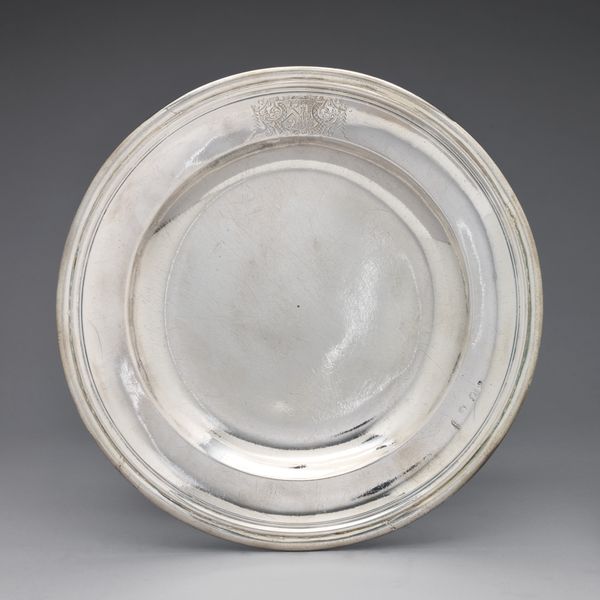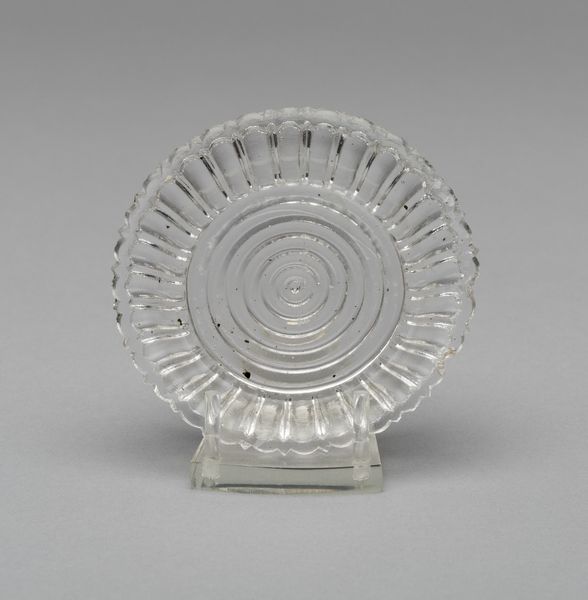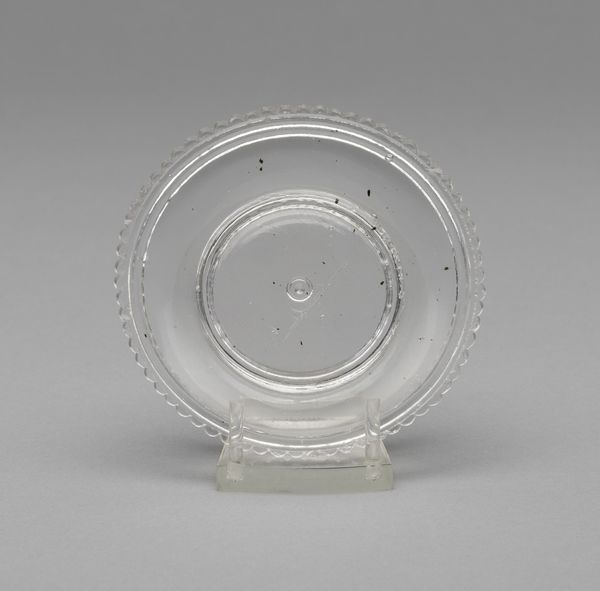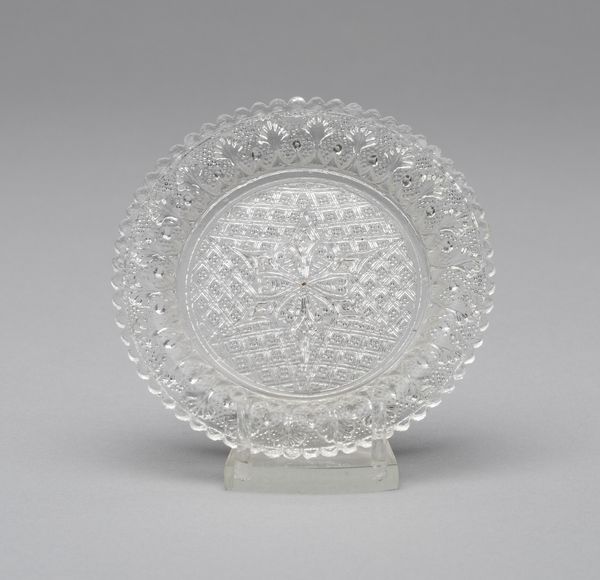
ceramic, glass
#
ceramic
#
glass
#
ceramic
#
decorative-art
Dimensions: diam. 9.5 cm (3 3/4 in.)
Copyright: Public Domain
Editor: We’re looking at a glass cup plate from around 1826-1830. It's a small, delicate thing with this beautiful opalescent quality. It feels so pristine, almost ethereal. What jumps out to you about its design? Curator: The formal arrangement speaks volumes. Note the concentric circles pressed into the center, drawing the eye inward, creating a sense of focused depth. How does this circular motif contrast with the foliage around the rim? Editor: I see what you mean! The center feels very modern, while the border is more decorative, almost classical. Curator: Precisely. Consider the textural contrast—the smooth interior against the intricate beaded edge. This interplay introduces a tension, a visual dynamism that belies its function. Does the light interact differently with these distinct zones? Editor: Definitely. The center seems to glow, while the edge diffuses the light, making the pattern almost disappear. It’s like two separate artworks on one plate! Is that intended, do you think, a celebration of different glass-pressing techniques perhaps? Curator: A pertinent observation. Its chromatic reticence underscores form and texture. We appreciate visual relationships established between positive and negative space. What elements are, strictly speaking, extraneous? Editor: I hadn’t thought of that, it all feels pretty necessary, right? Each detail accentuates another part... I guess without the foliage the center would be rather plain. It gives the eye something to follow. Curator: Indeed. Ultimately, its power rests in the precise orchestration of these formal elements. This has been illuminating; my understanding is further clarified. Editor: I completely agree. Looking closely at form and texture really unlocked a new appreciation for its simple beauty.
Comments
No comments
Be the first to comment and join the conversation on the ultimate creative platform.
